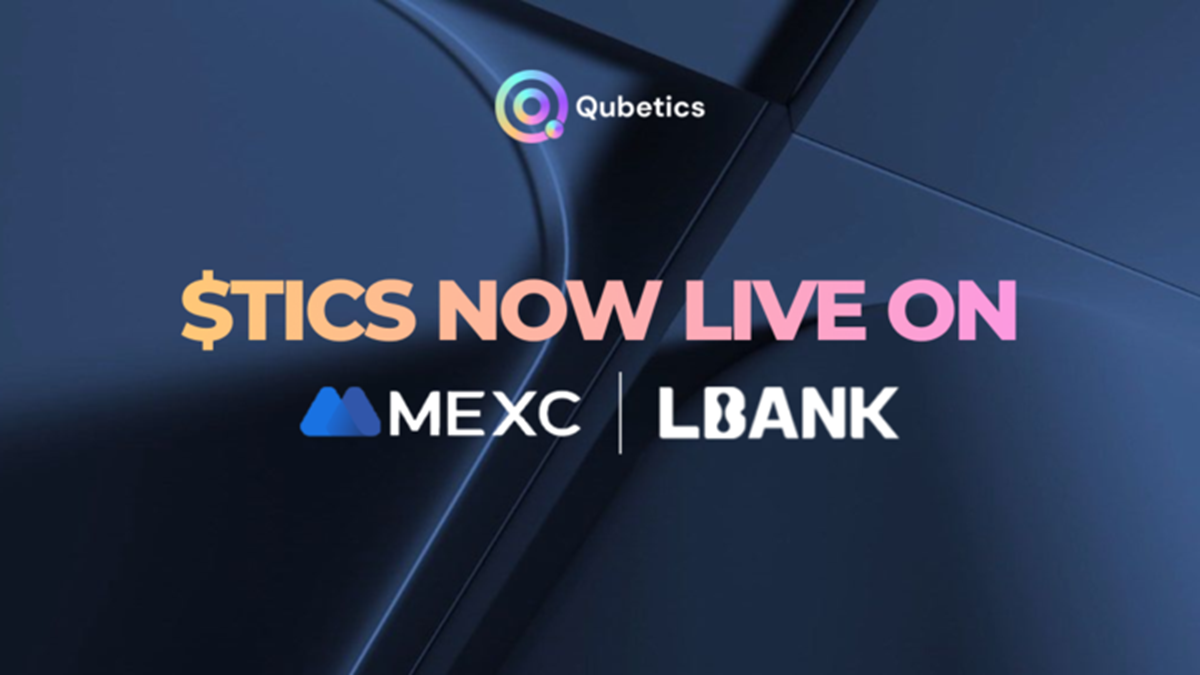Qubetics Soars to $4.20 as Ethereum and Kaspa Face Market Changes

Qubetics Emerges as a Leading Contender in the Crypto Market
A Rapid Ascent: Qubetics’ Launch Success
In the ever-evolving landscape of cryptocurrency, identifying promising projects before they gain widespread recognition is crucial. Among the early-stage initiatives capturing attention is Qubetics, which has quickly become a focal point for investors and analysts alike. Following its launch, Qubetics saw a remarkable surge from an initial price of $0.40 to $4.20 within just an hour, signaling strong interest from early adopters and data analysts. This project stands out not only for its innovative cross-chain capabilities but also for its governance incentives, validator rewards, and robust infrastructure—features that are often absent in nascent projects.
- A Rapid Ascent: Qubetics’ Launch Success
- Addressing Fragmentation in Blockchain: Qubetics’ Cross-Chain Functionality
- Enhancing Security and Income Through DPoS Governance
- Launch Data Highlights Qubetics’ Potential
- Kaspa’s Liquidity Challenges Post-Fair Launch
- ethereum‘s Licensing Debate: A Shift in Development Dynamics
- The Unique Positions of Qubetics, ethereum, and Kaspa
- Conclusion
- For More Information:
- FAQs
- Summary
Addressing Fragmentation in Blockchain: Qubetics’ Cross-Chain Functionality
The current blockchain ecosystem is often hindered by fragmented networks, making it challenging for users to transfer assets and share data seamlessly. Qubetics tackles this issue head-on by serving as a unified Web3 chain that integrates various networks, including Bitcoin and ethereum. This interoperability allows users to conduct transactions without the need to switch between different chains, eliminating the cumbersome processes often associated with third-party bridging services.
Enhancing Security and Income Through DPoS Governance
Qubetics employs a Delegated Proof of Stake (DPoS) governance model that distributes responsibilities among validators and delegators. This system enhances transaction speed, energy efficiency, and trust within the network. Validators are required to hold a minimum of 25,000 $TICS tokens, while delegators, who need at least 5,000 $TICS, participate in voting for validators responsible for network security. This decentralized approach not only fosters community involvement but also offers attractive rewards, with validators earning up to 30% APY and delegators receiving a share of those rewards based on their stake.
Launch Data Highlights Qubetics’ Potential
Qubetics successfully raised $18.4 million from over 28,500 early investors during its presale, launching at $0.40. Within the first hour, the price skyrocketed to $4.20, marking an impressive 950% increase and a staggering 420x return from its presale price of $0.01. Investors who contributed $10,000 during the presale could see their holdings valued at approximately $4.2 million at the peak. Trading volume exceeded $700,000 within the first 24 hours on MEXC, and Qubetics has established a solid support level at $2, with increasing buy pressure in that range. Analysts predict a price target of $10 to $15 following the mainnet launch, especially as the project continues to gain real-world traction through its wallet and validator programs.
Kaspa’s Liquidity Challenges Post-Fair Launch
In contrast, Kaspa has faced unique challenges stemming from its fair launch strategy, which intentionally excluded allocations to venture capital firms and centralized exchanges. While this approach promotes a community-first ethos, it has led to complications in liquidity provisioning. The lack of concentrated liquidity providers has resulted in slippage issues and wider spreads in its organic order book, particularly during periods of high demand.
ethereum‘s Licensing Debate: A Shift in Development Dynamics
Meanwhile, ethereum is currently navigating a significant debate surrounding copyleft licensing, as its founder advocates for the use of licenses like GNU GPL and AGPL in crypto projects. This initiative aims to prevent large corporations from appropriating open-source code without contributing back to the community. While this proposal seeks to ensure a sustainable innovation cycle, it has sparked discussions among developers who favor permissive licenses for quicker commercial deployment.
The Unique Positions of Qubetics, ethereum, and Kaspa
In a market characterized by performance, governance, and real-world applications, each of these three projects occupies a distinct niche. ethereum is redefining its ethical and legal frameworks through licensing reforms aimed at protecting developer rights while fostering innovation. Kaspa is reinforcing its decentralized principles by relying on community-driven liquidity, albeit with some distribution challenges. In contrast, Qubetics is rapidly gaining traction as a top investment choice, boasting a remarkable 420x price increase, successful presale results, and a unique interoperability model. Its DPoS governance structure enhances security and user engagement, making it a compelling option for those seeking real-world solutions in the crypto space.
Conclusion
Qubetics, ethereum, and Kaspa each represent critical trends in today’s cryptocurrency landscape. Qubetics has garnered significant attention with its impressive price surge and innovative features, enabling seamless cross-chain transfers and offering substantial rewards through its DPoS model. ethereum is focused on ethical software licensing to safeguard open-source innovation, while Kaspa’s liquidity challenges highlight the complexities of decentralized token distribution. Together, these projects illustrate the evolving nature of the most promising crypto assets today, each contributing to the ongoing dialogue about foundational redesign, scalable incentives, and infrastructure readiness.
For More Information:
- Qubetics: qubetics.com
- Twitter: @qubetics
FAQs
What distinguishes Qubetics as a leading crypto project?
Its remarkable 420x early return on investment, DPoS governance model, and cross-chain interoperability set it apart from competitors.
How does the DPoS system benefit Qubetics participants?
By staking $TICS tokens, holders can vote for validators who secure the network and earn a share of the 30% APY.
What is the launch history of Qubetics?
Qubetics raised $18.4 million, launched at $0.40, and reached $4.20 within the first hour, marking a significant milestone in the crypto market.
Summary
Qubetics, ethereum, and Kaspa each highlight essential trends in the cryptocurrency sector. Qubetics has captured attention with its impressive price growth and innovative features, while ethereum focuses on ethical licensing reforms, and Kaspa navigates liquidity challenges. Together, they exemplify what defines the most promising crypto assets today, from foundational redesign to scalable incentives and infrastructure readiness.







